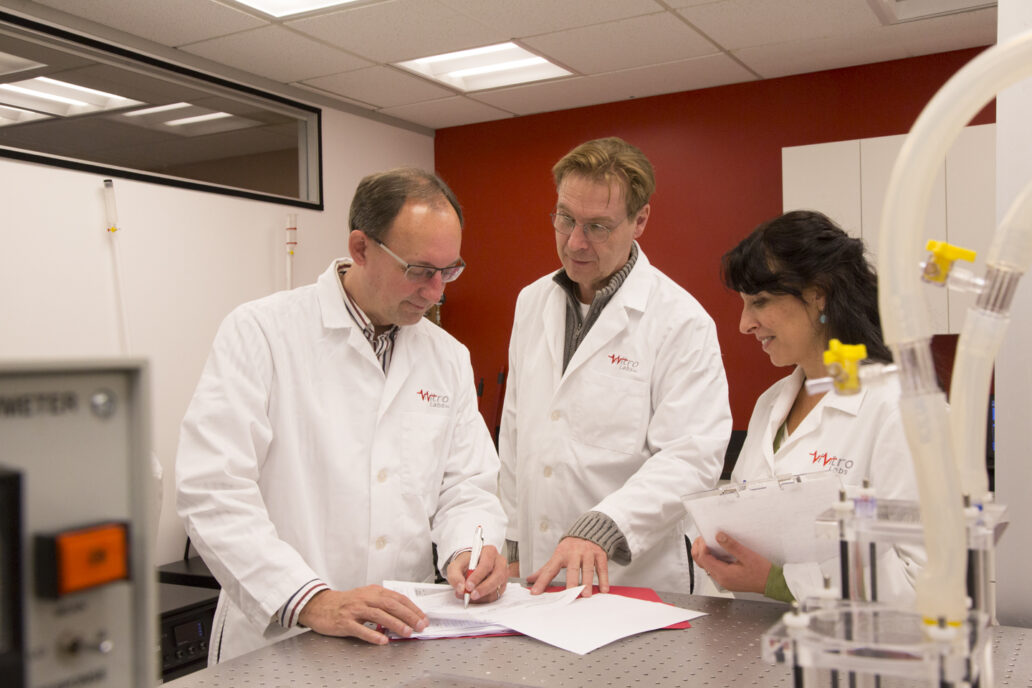
How ISO 13485:2016 changes will impact your QMS (sections 4-6)
With the March 1, 2016 release of ISO 13485:2016, medical device developers and manufacturers have been given a three year grace period to implement changes from the previous 2003 version. During those three years both the 2016 and 2003 versions will be valid to operate under; however after the three year grace period, compliance with the 2016 version will be mandatory.
So what are the major changes and how are organizations to address them? This blog will cover sections 4, 5 and 6 of ISO 13485:2016 and the major changes from the 2003 version while Part 2 will go over sections 7 & 8.
Section 4 – Quality Management System
ISO 13485:2016 places heavy emphasis on a risk-based approach throughout the quality management system following the current process approach in ISO 13485:2003, which only required risk management for product realization. This ‘new’ risk approach will also be mandatory for any outsourced processes.
An example of risk-based approach can be seen in the major change for the validation of software. All software used in the quality management system will require documentation of the procedures for validation. “The specific approach and activities associated with software validation and revalidation shall be proportionate to the risk associated with the use of the software.”
Also within section 4 is the additional requirement of a Medical Device File, similar to a technical file.
“The content of the file(s) shall include, but is not limited to:
- a) general description of the medical device, intended use/purpose, and labelling, including any instructions for use;
- b) specifications for product;
- c) specifications or procedures for manufacturing, packaging, storage, handling and distribution;
- d) procedures for measuring and monitoring;
- e) as appropriate, requirements for installation;
- f) as appropriate, procedures for servicing.”
Section 5 – Management Responsibility
Changes to section 5 are fairly minimal. Responsibilities and authority must now be documented for the interrelation of all personnel that manage, perform and verify work affecting quality. There is also the additional requirement of documenting procedures for management review, which essentially means that there needs to be documented justification for the frequency at which management reviews are held.
Section 6 – Resource Management
There are several larger changes within section 6. First, within “Human Resources” the organization will now be required to document the processes used to establish competence, provide training and ensure awareness of personnel. Furthermore, there is accentuated value in maintaining, updating and evaluating competence of those working within the organization’s quality management system. This means that organizations must be able to provide continuous retraining when required and be able to provide a means of evaluating the effectiveness of said training.
Within the subsection of “Infrastructure” there is a new requirement stating that the organization must document the requirements of their infrastructure in order to achieve conformity to product requirements and prevent product mix-ups ensuring orderly product handling.
Section 6 also includes updates to the previous “Work Environment” section as well as a new sub-section dedicated to “Contamination Control”. The additions to work environment state once again that the requirements of the work environment needed to achieve conformity to product requirements, must be documented. On top of this, organizations are expected to control their work environment by documenting requirements for health, cleanliness and clothing of personnel if they can have any effect on medical device safety or performance. There is also a “note” referencing ISO 14644 – “Classification of air cleanliness in terms of concentrate of airborne particles in cleanrooms and clean zones”, and ISO 14698 – “Standard on Bio-contamination control for cleanrooms”.
The new subsection “Contamination Control” includes requirements for a plan and documentation in order to control contaminated product and prevent contamination of the work environment, personnel, or product. It is also addresses sterile medical devices. The subsection states that the organization must document the requirements for control of contamination with microorganisms or particulate matter and maintain the required cleanliness during assembly or packaging process. This means that any work involving sterile medical devices will now require validation of control methods in place.
Key Take-aways
The main things to take away from changes made in Sections 4, 5, and 6 are the following:
- Risk-based approach for all things related to the Quality Management System, including external processes.
- Software Validation
- Addition of a Medical Device File
- Documentation of the justification as to the frequency at which management reviews are held
- Means of evaluating the effectiveness of training provided
- Validation of Work Place Environment procedures
- Validation of sterility control methods
Overall, many of the changes can be summarized as “everything must now be documented in one way or another”. Part 2 of my review of changes in ISO 13485 will cover Section 7 – Product Realization and Section 8 – Measurement, analysis and improvement. In the meantime, I look forward to hearing from readers on questions they may have on the new requirements.
Michael May is a former QA/RA Specialist st StarFish Medical. He uses his background in biomaterials engineering to help clients with QA/RA challenges. Mike also uses his Pokemon Go skills to fill time when hockey season is over.
Images: StarFish Medical
One product standard we deal with frequently is IEC 60601-1 Medical Electrical Equipment – Part 1: General Requirements for Basic Safety and Essential Performance. Bjarne Hansen distills its essence to help readers understand where some of our design decisions come from.
